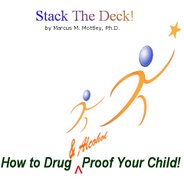Since the violent tragedy that occurred on Monday, I have had a lot of requests for information on what parents can do about school violence.
Today's article will feature some warning signs that parents and other adults should look for:
Youth Violence Warning Signs
Researchers have identified a number of warning signs that suggest that a child may be at risk for violent behavior. The presence of one or more of the following increases the risk of violent or dangerous behavior:
- past violent or aggressive behavior (including uncontrollable angry outbursts)
access to weapons - bringing a weapon to school
- past suicide attempts or threats
- family history of violent behavior or suicide attempts
- blaming others and/or unwilling to accept responsibility for one's own actions
- recent experience of humiliation, shame, loss, or rejection
- bullying or intimidating peers or younger children
- a pattern or history of making threats to harm others or self
- being a victim of abuse or neglect (physical, sexual, or emotional)
- witnessing abuse or violence in the home
- themes of death or depression repeatedly evident in conversation, written expressions, reading selections, or artwork
- preoccupation with themes and acts of violence in TV shows, movies, music, magazines, comics, books, video games, and Internet sites
- mental illness, such as depression, mania, psychosis, or bipolar disorder
- use of alcohol or illicit drugs
- disciplinary problems at school or in the community (delinquent behavior)
- past destruction of property or vandalism
- cruelty to animals
- firesetting behavior
- poor peer relationships and/or social isolation
- involvement with cults or gangs.
- little or no supervision or support from parents or other caring adult
The above warning signs do not stand in isolation. Generally, one event is not enough to warrant any serious concern. the greater the number of these warning signs present, the greater the risk. It is important to realize, however, that many children exhibit these warning signs and never resort to violence. Even so, these signs can be a cue that something is wrong, and the individual needs help.
Parents, teachers, coaches, social workers, and clinicians should look for patterns of on-going behavior involving multiple warning signs.

